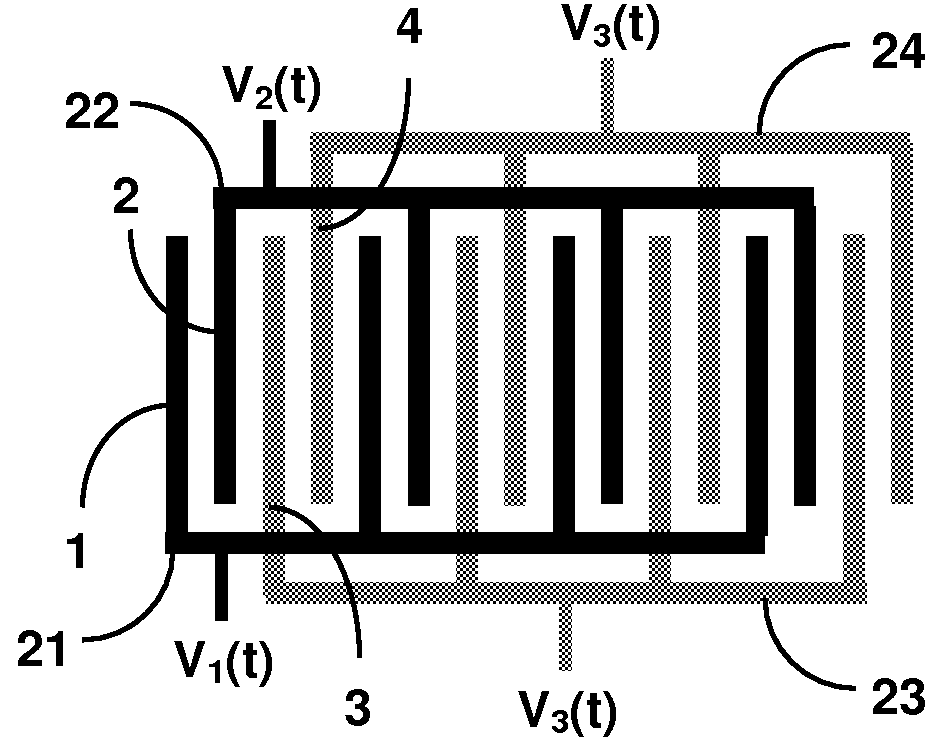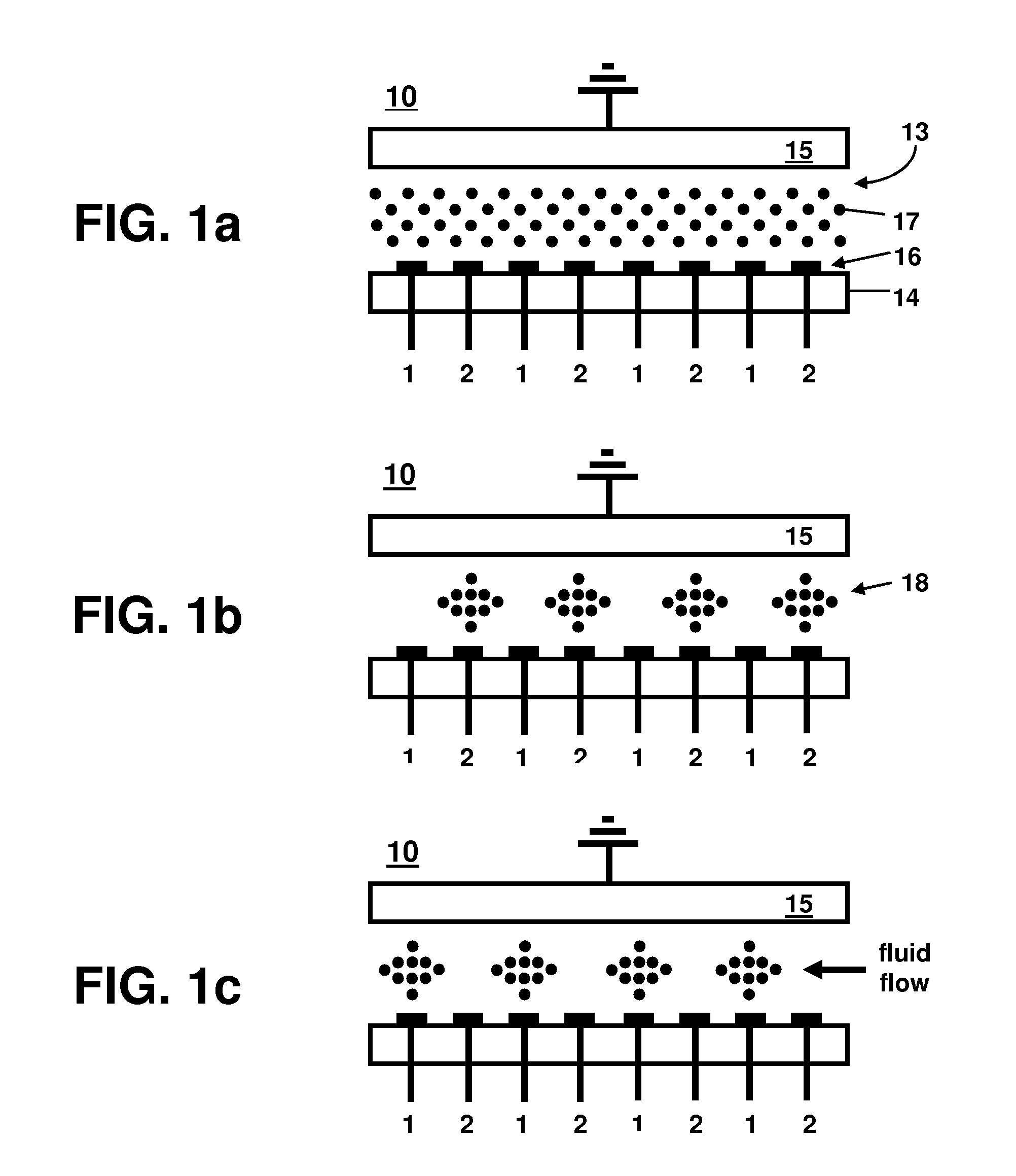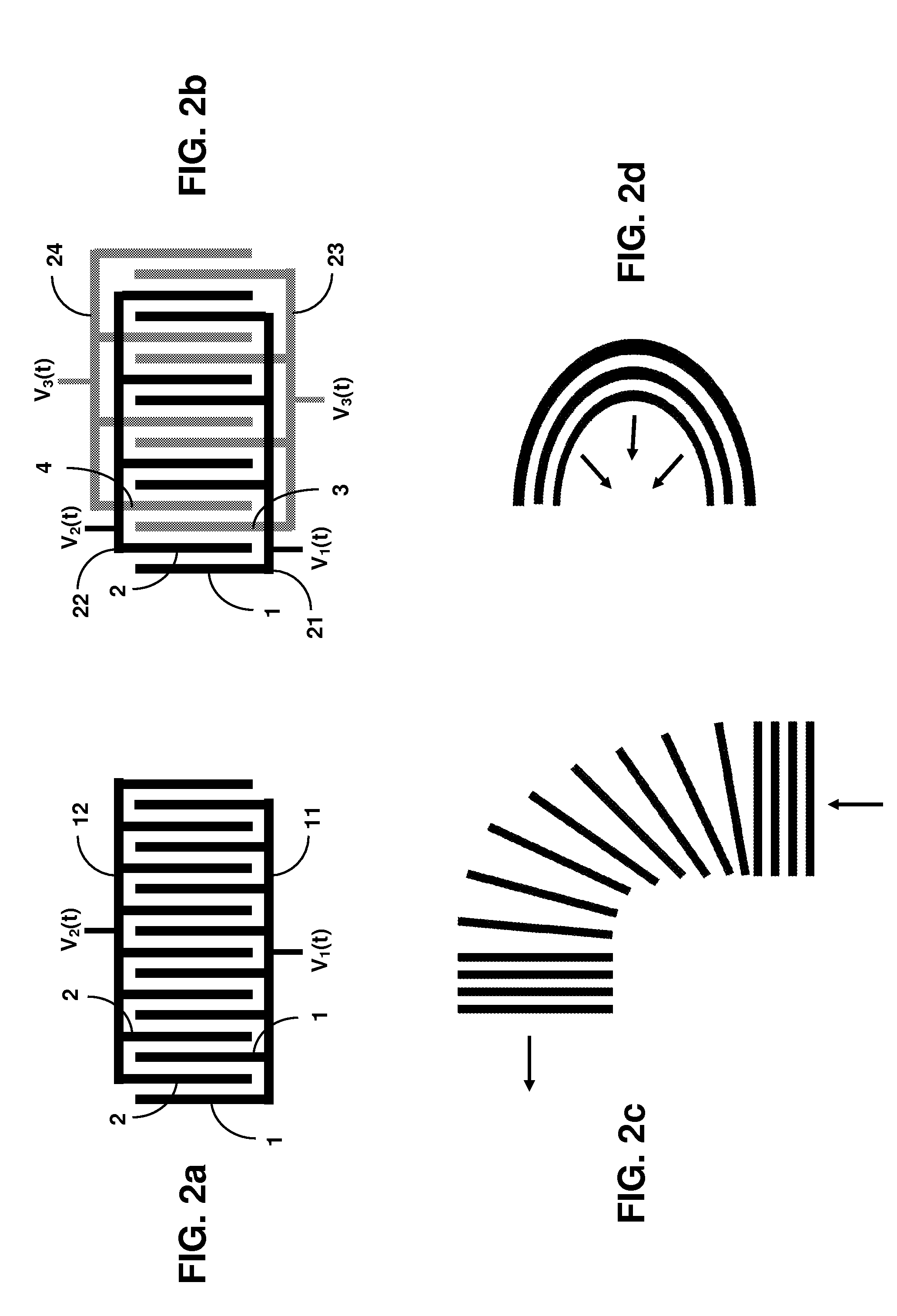Microfluidic device for the assembly and transport of microparticles
a microfluidic device and microparticle technology, applied in the field of microfluidics, can solve problems such as slow techniques, and achieve the effect of low field strength
- Summary
- Abstract
- Description
- Claims
- Application Information
AI Technical Summary
Benefits of technology
Problems solved by technology
Method used
Image
Examples
Embodiment Construction
[0015]Particles experience both an electrophoretic force and a dielectrophoretic force when exposed to a spatially nonuniform electric field. The electrophoretic force, being the time-average of the product of the particle charge and the field strength, vanishes in an ac field of sufficiently high frequency. However, the dielectrophoretic force, being the product of the particle dipole moment and the gradient of the field strength, remains effective in high-frequency fields because the dielectrophoretic force averaged over the field oscillations gives a nonzero value. If a particle is negatively polarized relative to the liquid, it will move toward a region of low field strength (negative dielectrophoresis, or nDEP). Therefore, high-gradient ac electric fields can be used to aggregate suspended particles. In particular, interparticle electric and hydrodynamic interactions, if sufficiently strong, can cause a negatively polarized suspension of initially uniform concentration to under...
PUM
| Property | Measurement | Unit |
|---|---|---|
| height | aaaaa | aaaaa |
| frequency | aaaaa | aaaaa |
| velocity | aaaaa | aaaaa |
Abstract
Description
Claims
Application Information
 Login to View More
Login to View More - R&D
- Intellectual Property
- Life Sciences
- Materials
- Tech Scout
- Unparalleled Data Quality
- Higher Quality Content
- 60% Fewer Hallucinations
Browse by: Latest US Patents, China's latest patents, Technical Efficacy Thesaurus, Application Domain, Technology Topic, Popular Technical Reports.
© 2025 PatSnap. All rights reserved.Legal|Privacy policy|Modern Slavery Act Transparency Statement|Sitemap|About US| Contact US: help@patsnap.com



